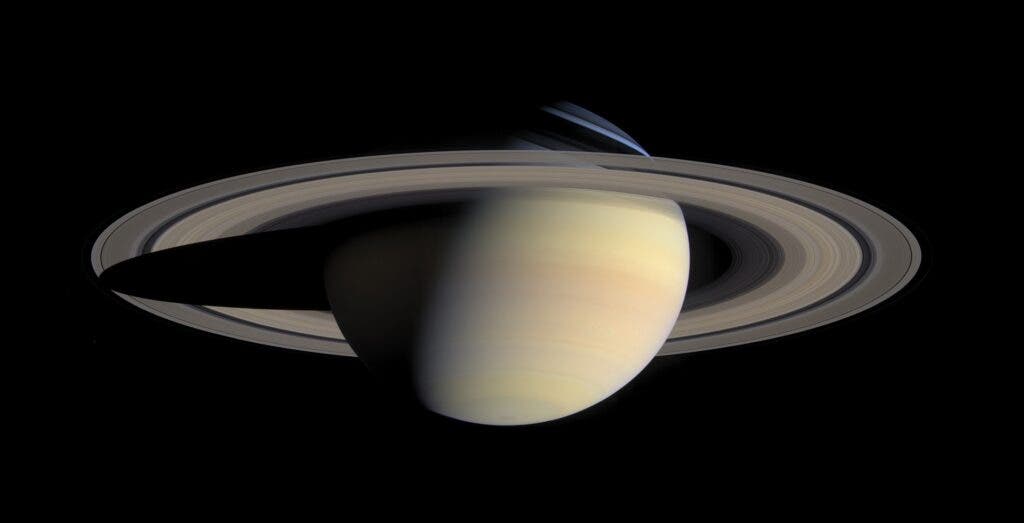Even the greatest of us have to take those around us into account. It’s true on a social level and, as new research shows, it’s true on an astronomical level as well.

Planets and the moons that orbit them form interdependent systems in which both influence one another. We see this with our Moon being tidally locked to our planet, while it, in turn, exerts its gravitational influence on Earth’s oceans.
These are undeniably massive effects that the two bodies exert on one another. But they’re not the most dramatic ones we’ve found so far. A new paper reports that Saturn, one of the titans of our Solar system, has a tilted rotation axis — and, according to the team, this is the doing of its moons.
Bowing to influence
The team, with members from CNRS (France’s national research center), Sorbonne University, and the University of Pisa working with the Paris Observatory report that Saturn’s satellites can explain the mystery of its tilted axis. They also predict that the planet will keep tilting in the future for a few billion years.
This tilt is caused by the gravitational pull of Saturn’s moons as they migrate away from their host planet. Titan, Saturn’s largest natural satellite, bears the lion’s share of the blame, they add.
Saturn’s moons are gradually wrestling free of the giant’s gravitational influence and are slowly inching away from it. While we were aware this was happening, the study showcases that the process is unfolding much faster than previously estimated. By using the new migration rate into our models and calculations, the team concluded that it is, in fact, tied to the planet’s tilt. Furthermore, as Saturn’s moons get further away from the planet, its tilt will keep increasing.
However, a decisive event (in regards to Saturn’s tilt) likely occurred recently in cosmological terms, the team adds. For around three billion years after its formation, Saturn’s axis was only slightly tilted; however, around one billion years ago, the tilting process took root.
At that time, the team explains, the movement of Saturn’s moons triggered a “resonance phenomenon” that continues to this day. We’re seeing the middle stages of this phenomenon currently. While this was already known as well, it was assumed that it started four billion years ago due to a change in Neptune’s orbit and that Saturn’s orbit today is stable — now we know neither are true. Over the next billion years or so, Saturn’s inclination relative to its axis could more than double.
Jupiter, the team adds in a different paper, is likely to undergo a similar tilting with the migration of its own moons due to the influence of Uranus. This process will likely take place over five billion years, says the team, and could take it from its current inclination of 3° to more than 30°.
The first paper “The large obliquity of Saturn explained by the fast migration of Titan” has been published in the journal Nature Astronomy.
The second paper “The future large obliquity of Jupiter” has been published in the journal Astronomy & Astrophysics.


